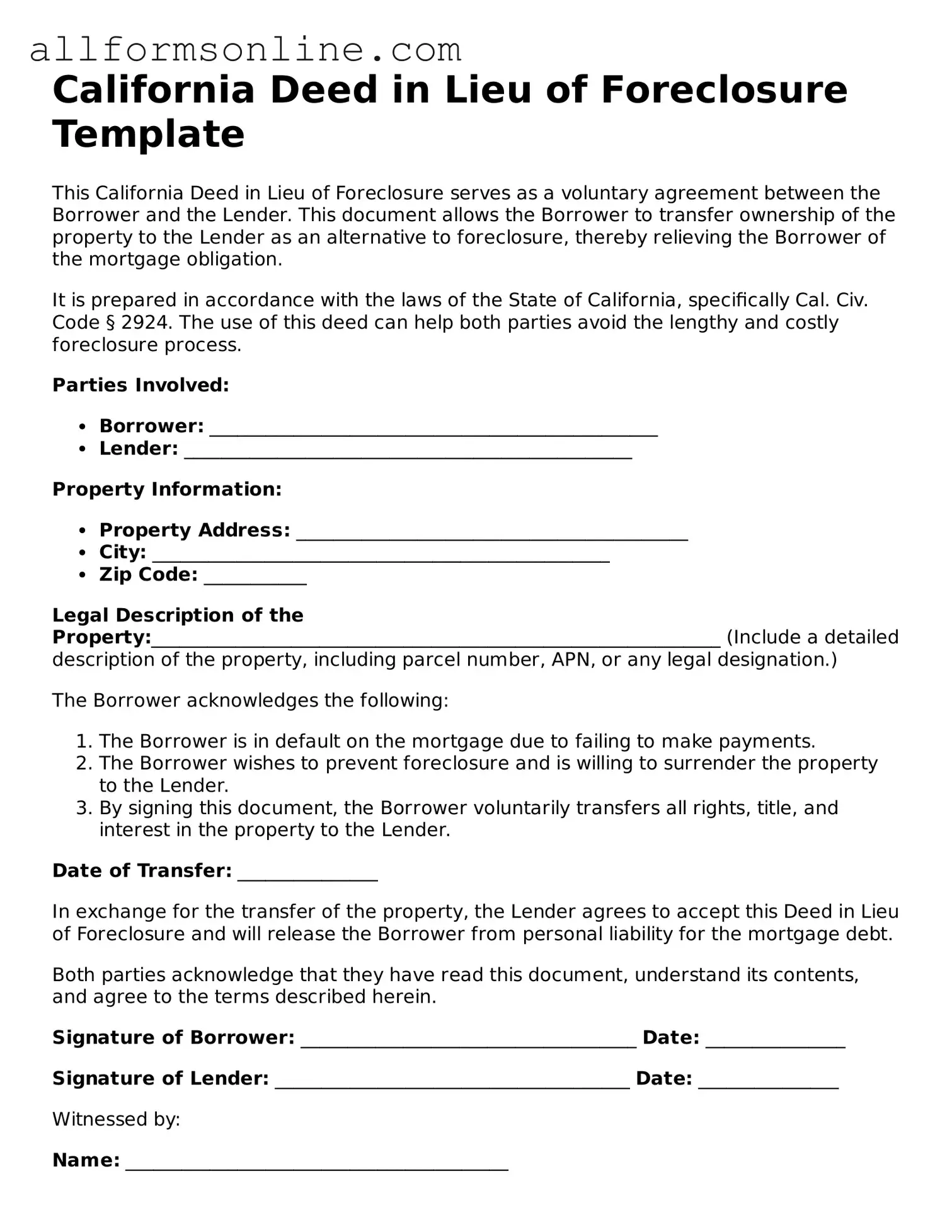What is a Deed in Lieu of Foreclosure?
A Deed in Lieu of Foreclosure is a legal process where a homeowner voluntarily transfers the title of their property to the lender to avoid foreclosure. This option allows the homeowner to relinquish ownership of the home and, in return, the lender agrees to cancel the mortgage debt. It can be a beneficial alternative for those facing financial difficulties, as it typically results in a less damaging impact on the homeowner's credit score compared to a foreclosure. Additionally, it may help the homeowner avoid the lengthy and stressful foreclosure process.
Who is eligible for a Deed in Lieu of Foreclosure?
Eligibility for a Deed in Lieu of Foreclosure generally depends on the lender’s policies, but certain criteria are common. Homeowners must typically be experiencing financial hardship and unable to keep up with mortgage payments. They should also be the legal owner of the property and have no other liens against the home that could complicate the transfer. Lenders usually require that the homeowner attempts to sell the property first, although this is not always a strict requirement. Each situation is unique, so it’s advisable to consult with the lender to understand specific eligibility requirements.
What are the benefits of choosing a Deed in Lieu of Foreclosure?
Choosing a Deed in Lieu of Foreclosure can offer several advantages. First, it allows homeowners to avoid the lengthy foreclosure process, which can take months or even years. Second, it may have a less severe impact on the homeowner’s credit score compared to a foreclosure. Additionally, it can provide a sense of closure, allowing the homeowner to move on without the burden of an unpaid mortgage. Lastly, some lenders may offer relocation assistance or other benefits to help the homeowner transition to new living arrangements.
What are the potential downsides of a Deed in Lieu of Foreclosure?
While a Deed in Lieu of Foreclosure can be beneficial, there are potential downsides to consider. Homeowners may still face tax implications, as the IRS may consider the forgiven debt as taxable income. Additionally, the process may not be suitable for everyone, especially if there are multiple liens on the property. Furthermore, some lenders may not agree to a Deed in Lieu of Foreclosure, especially if they believe they can recover more through a foreclosure. It’s important to weigh these factors and consult with a financial advisor or attorney before proceeding.
How does the process of completing a Deed in Lieu of Foreclosure work?
The process begins with the homeowner contacting their lender to express interest in a Deed in Lieu of Foreclosure. The lender will review the homeowner’s financial situation and may require documentation to assess eligibility. If approved, the homeowner will need to sign a deed transferring ownership of the property to the lender. This deed must be recorded with the county to finalize the transfer. Once completed, the lender typically cancels the mortgage debt, allowing the homeowner to avoid foreclosure. It’s advisable for homeowners to seek legal advice to ensure they understand their rights and responsibilities throughout this process.
